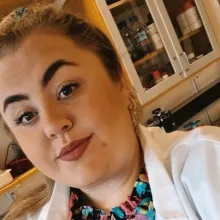
BMC Seminar Thursday 20th of October at 12:00 in Læknagarður, room 343
Speaker: Hildur Rún Helgudóttir, Ph.D. student under the supervision of Þórarinn Guðjónsson and Viðar Örn Eðvarðsson, Department of Anatomy, Biomedical Center, Faculty of Medicine, School of Health Sciences, University of Iceland.
Title: Modelling APRT deficiency in kidney cells in vitro
Abstract: Adenine phosphoribosyltransferase deficiency (APRTd) is a rare autosomal recessive disorder of adenine metabolism that results in the generation and renal excretion of large amounts of the poorly soluble 2,8-dihydroxyadenine (DHA). Affected individuals form urinary stones and crystal nephropathy characterized by inflammation and fibrosis leading to progressive chronic kidney disease. Improved understanding of the mechanisms of DHA crystal-induced kidney injury and identification of alternative therapeutic approaches remain essential unmet needs. The aim of this study is to establish a cell culture model for the characterization of inflammatory and phenotypic changes associated with DHA crystal-induced kidney injury that may be used as targets for clinical interventions.
Two kidney cell lines, Madin-Darby canine cell line (MDCK) and human embryonic cell line (HEK293) are used in the study. Both cell lines were first treated with DHA in concentrations similar to those observed in the urine of untreated humans with APRTd, both in monolayers and 3D/transwell assays. Further, siRNA has been utilized against APRT to knock down the gene in HEK293 and work with MDCK is underway. Read-out assay included cell viability, RT-PCR, western blot and immunostaining. We will also generate stable MDCK-APRT and HEK293-APRT knockdown and knockout cell lines using the CRISPR technology.
Short bio: Hildur was born in Reykjavik, Iceland. She obtained both her bachelor’s degree in Biology and Master’s degrees in Medical Life Sciences, at the University of Iceland. She did her Master ‘s project at Sævar Ingþórssons lab, where she looked at the transforming potential of HER2 in subpopulations of breast epithelium. She is now pursuing PhD studies at Þórarinn Guðjónssons lab where she is looking at the molecular mechanism of APRTd in in vitro models.
